site search
online catalog
ONE OF THE VERY FEW GENUINE WORLD WAR 2 NAZI COSSACK KUBANKAS
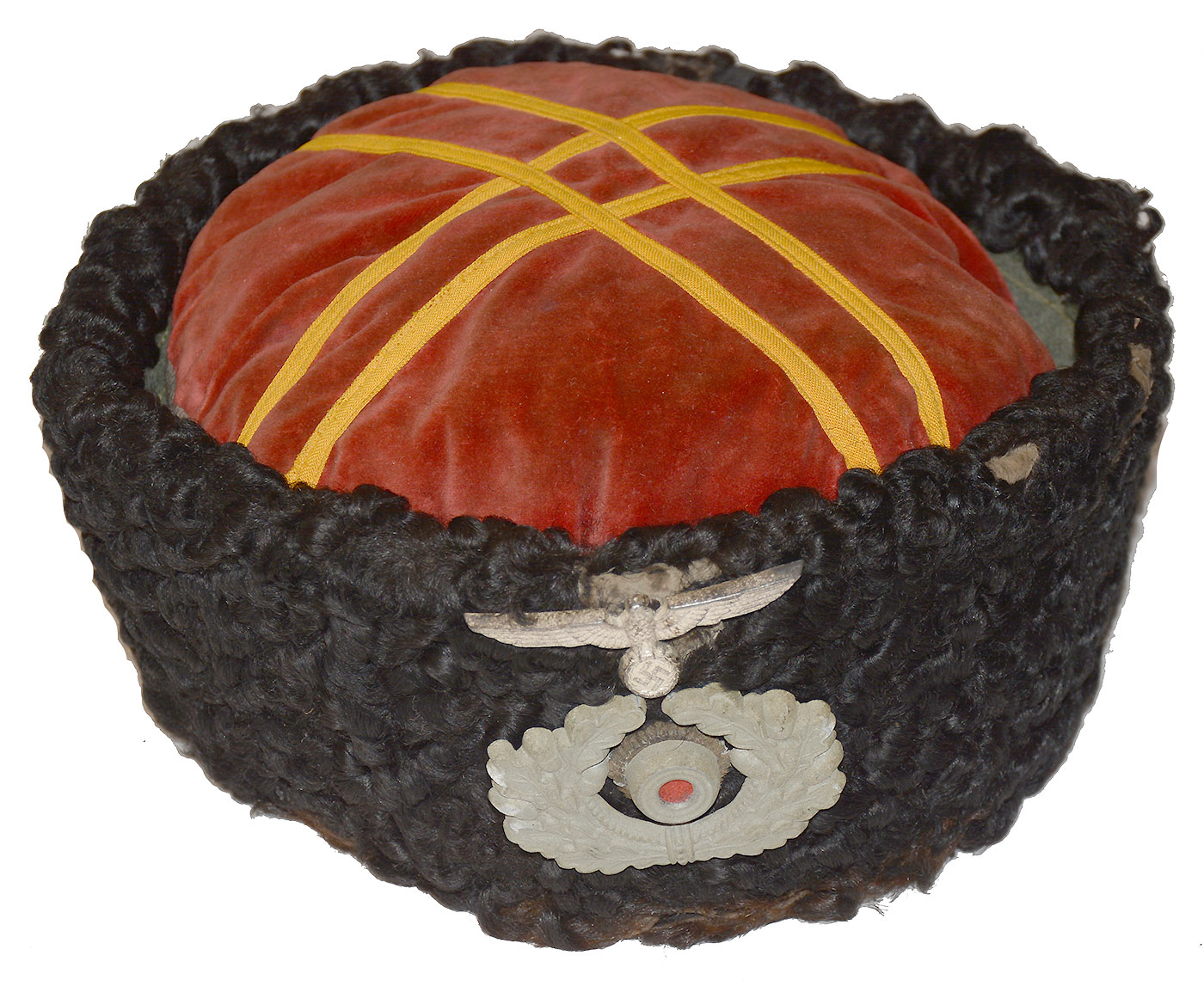
Hover to zoom

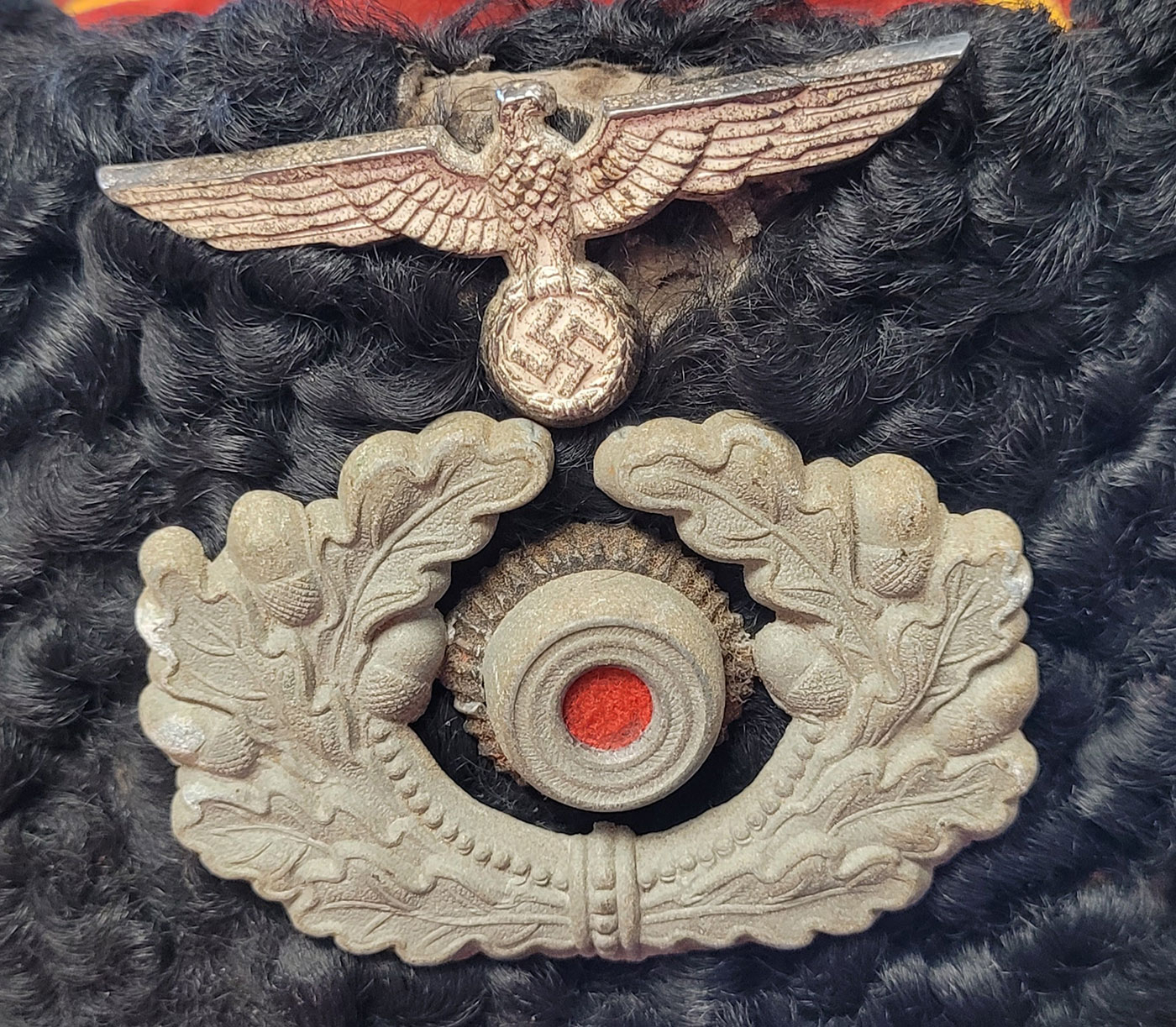
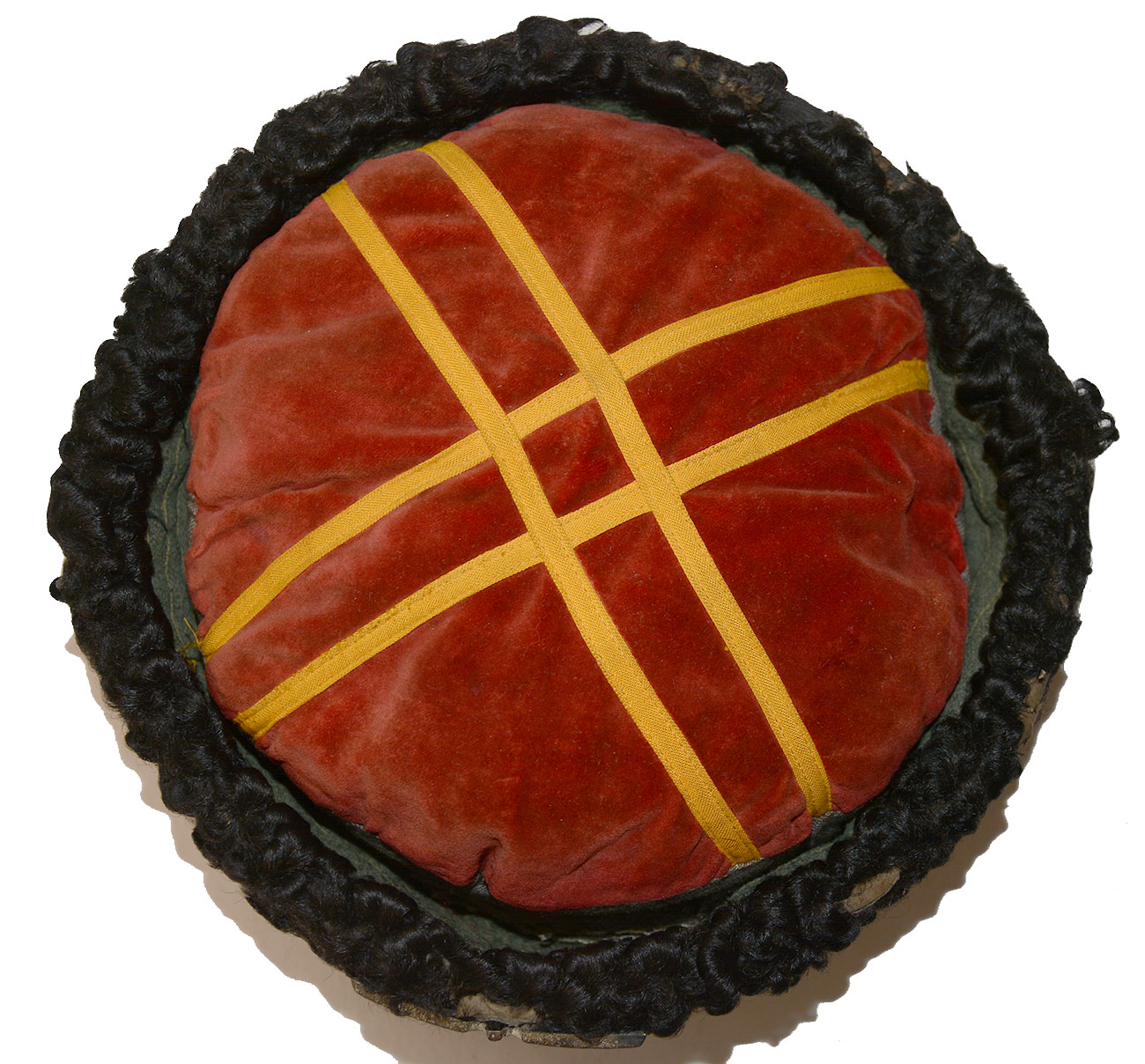
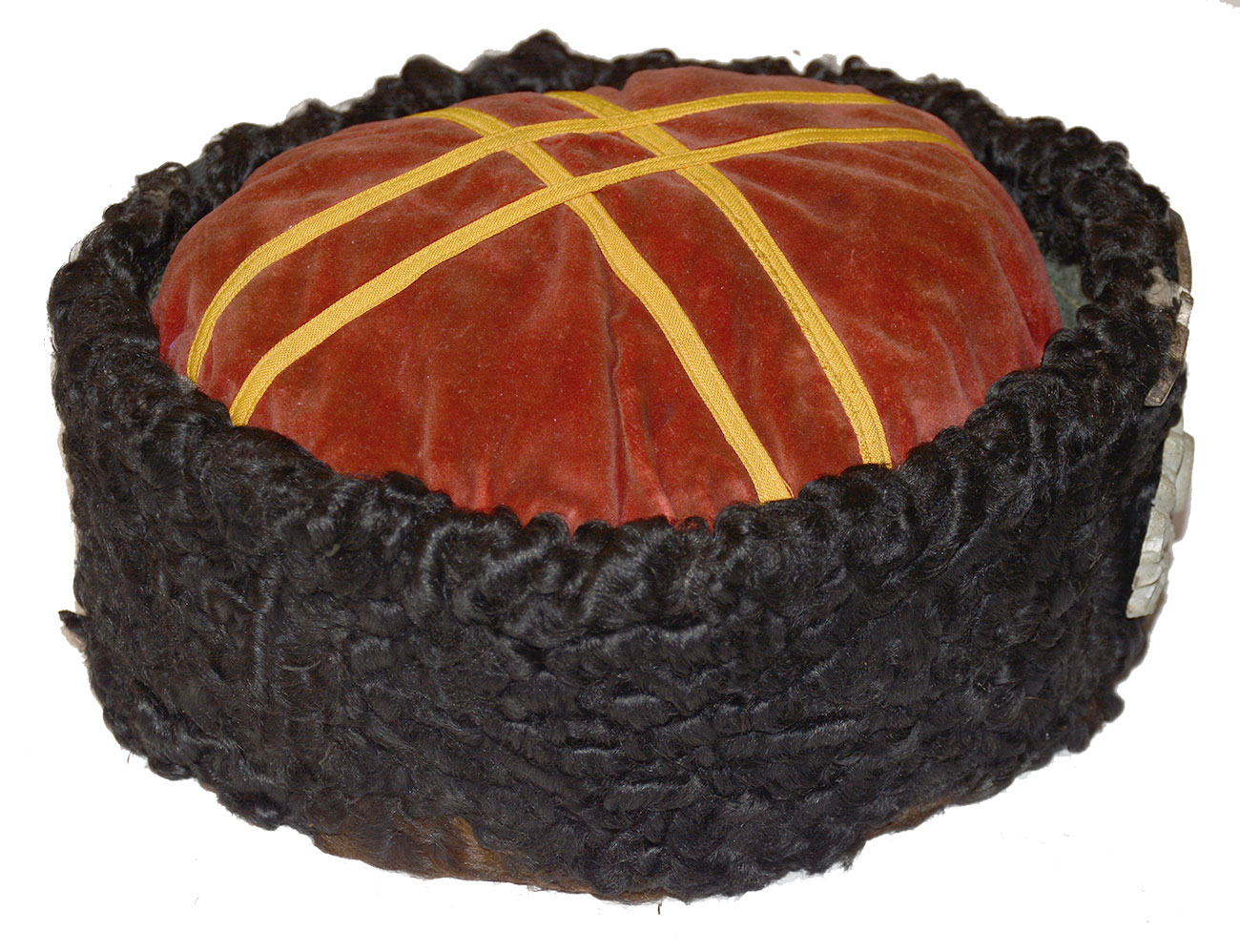
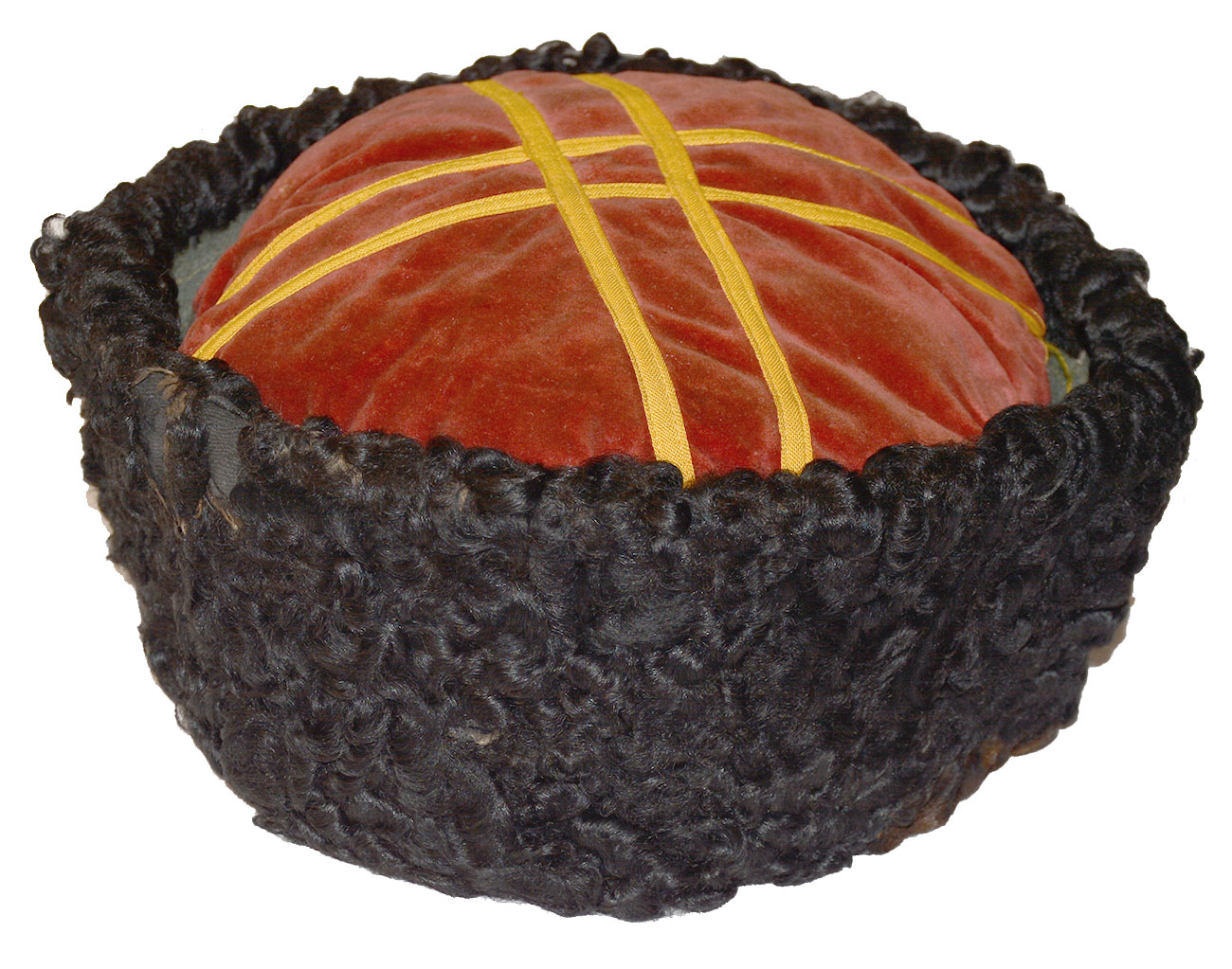
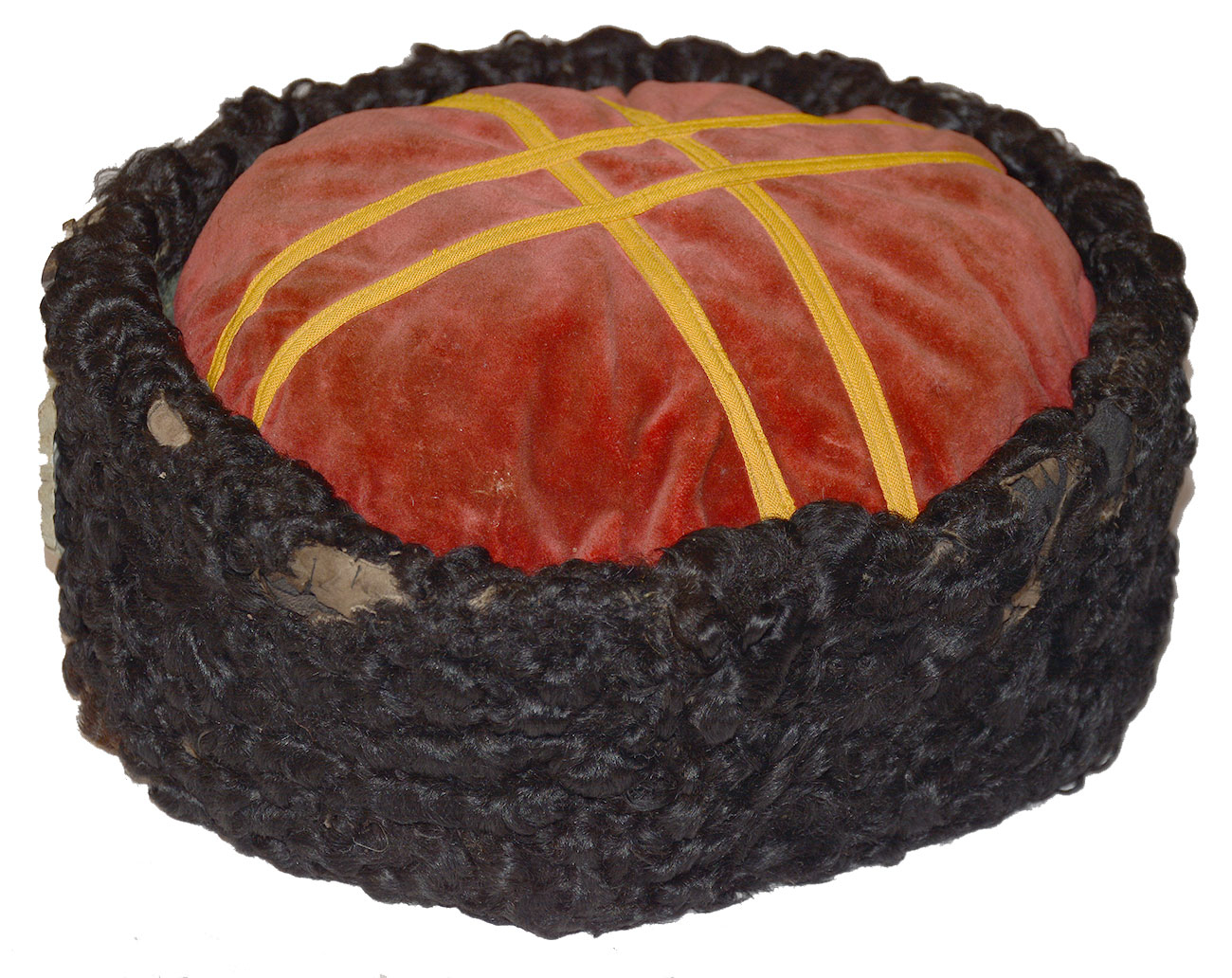
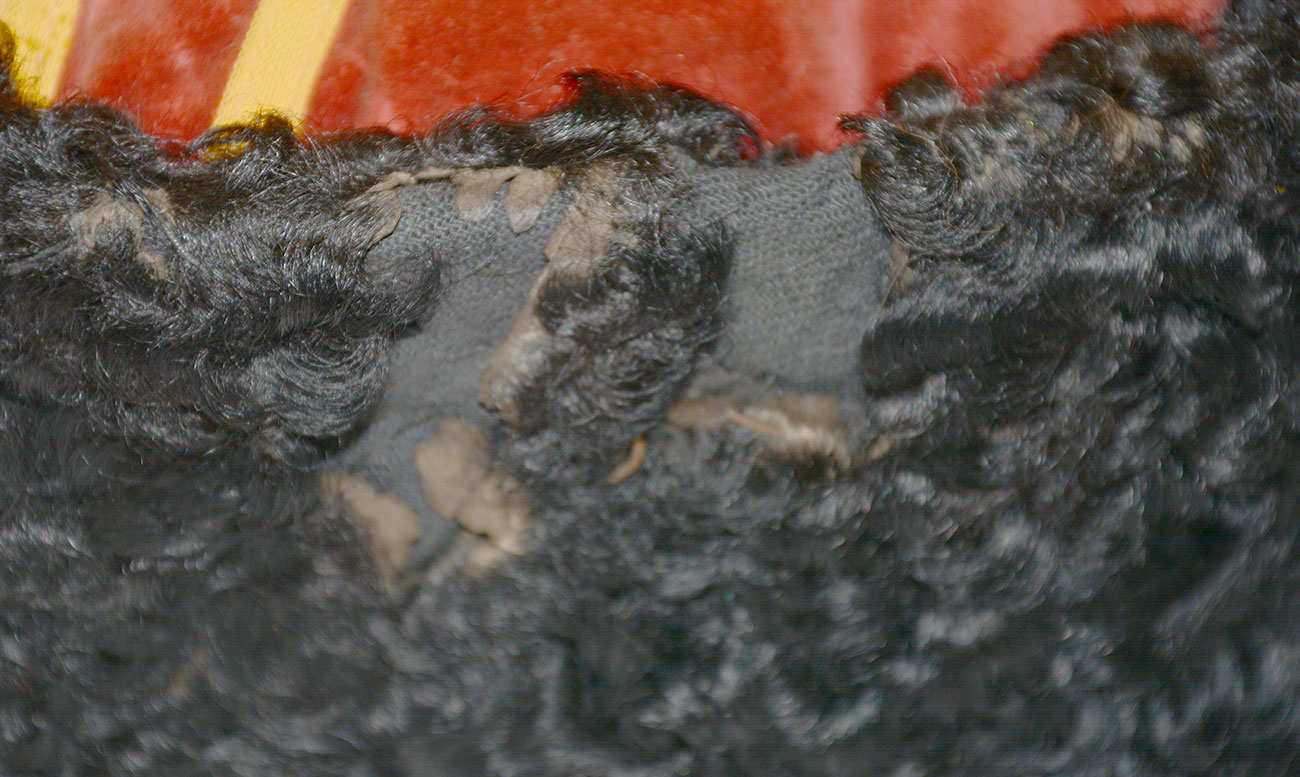
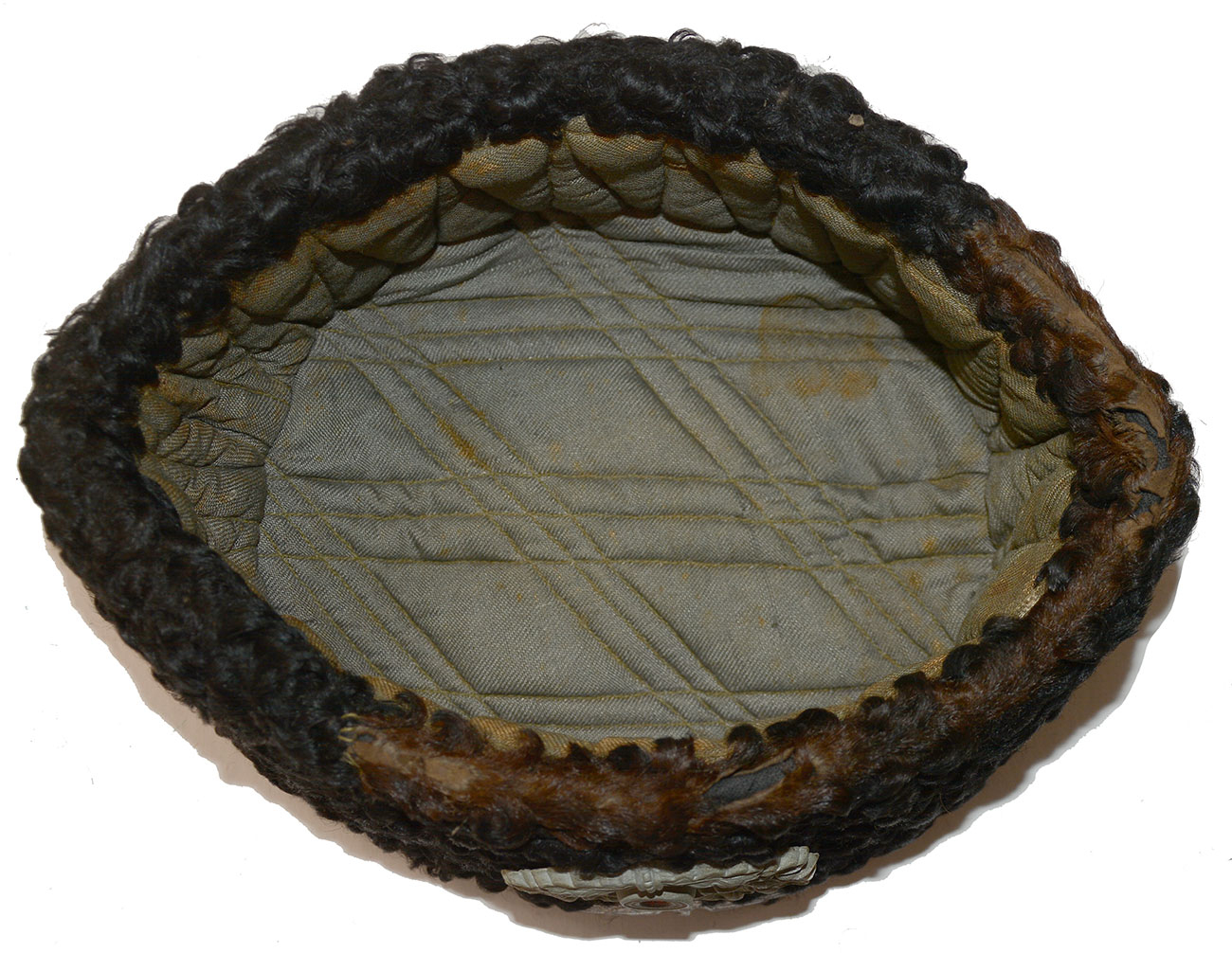
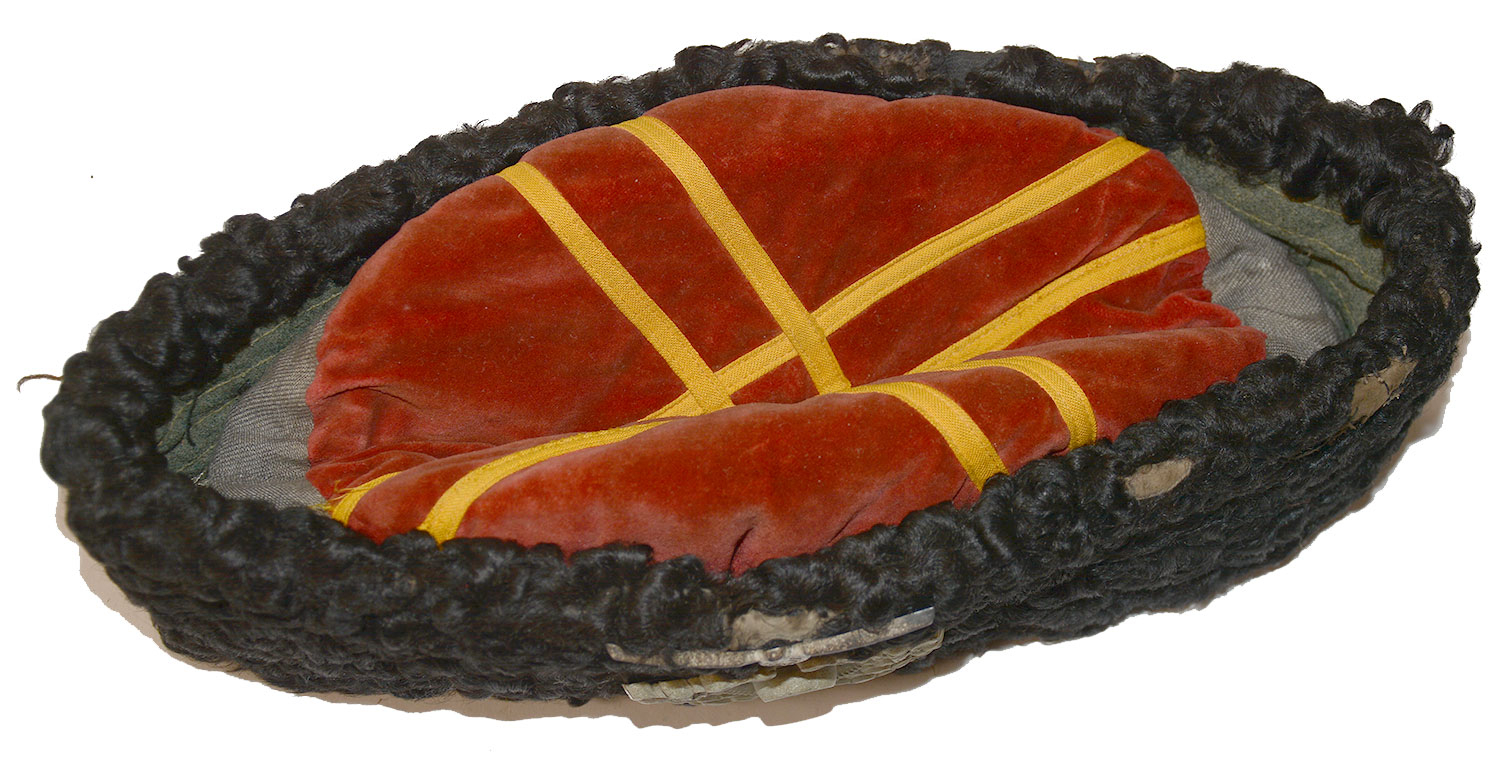
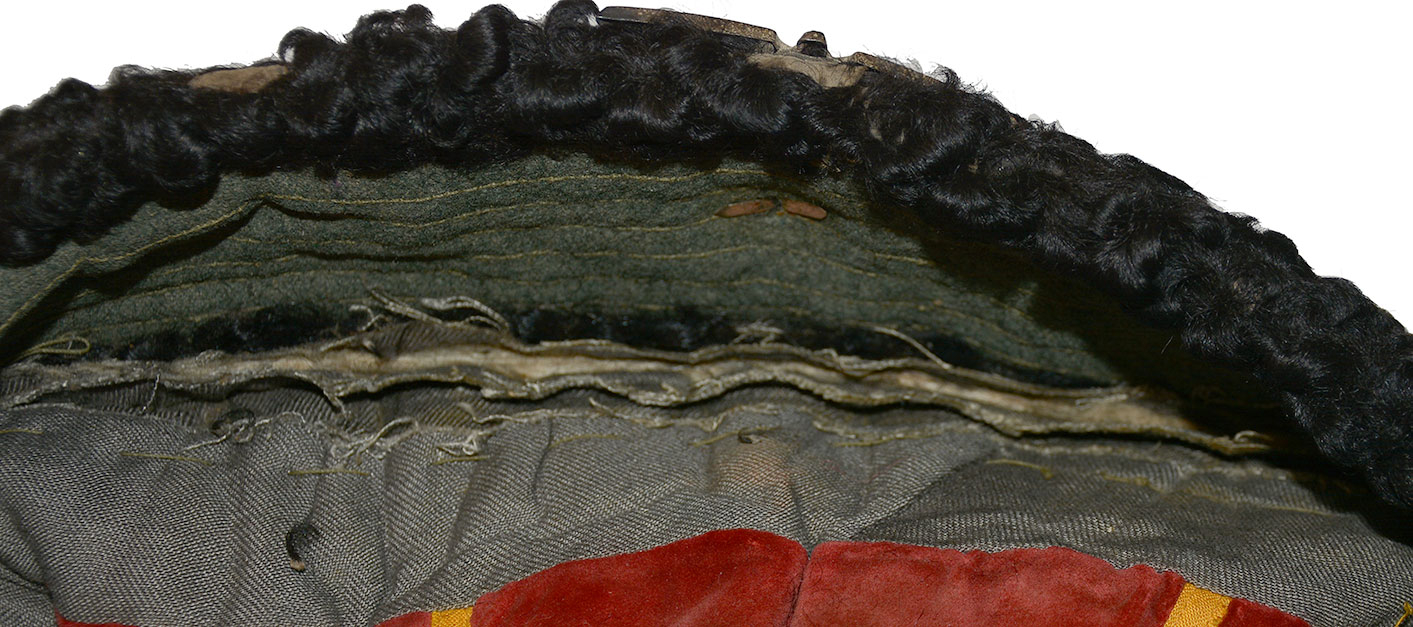
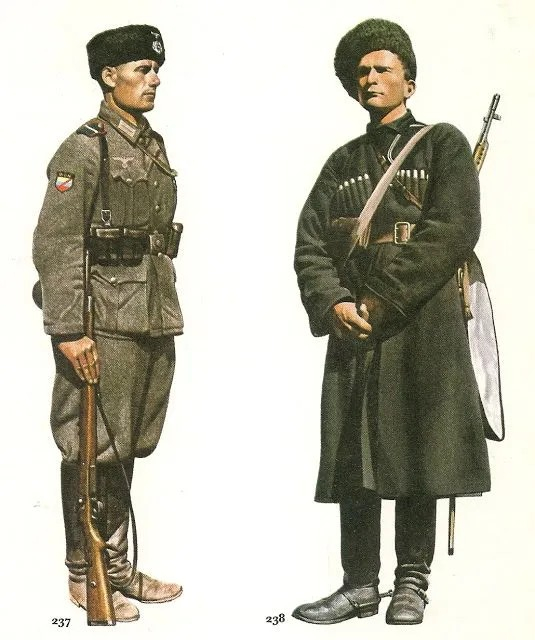
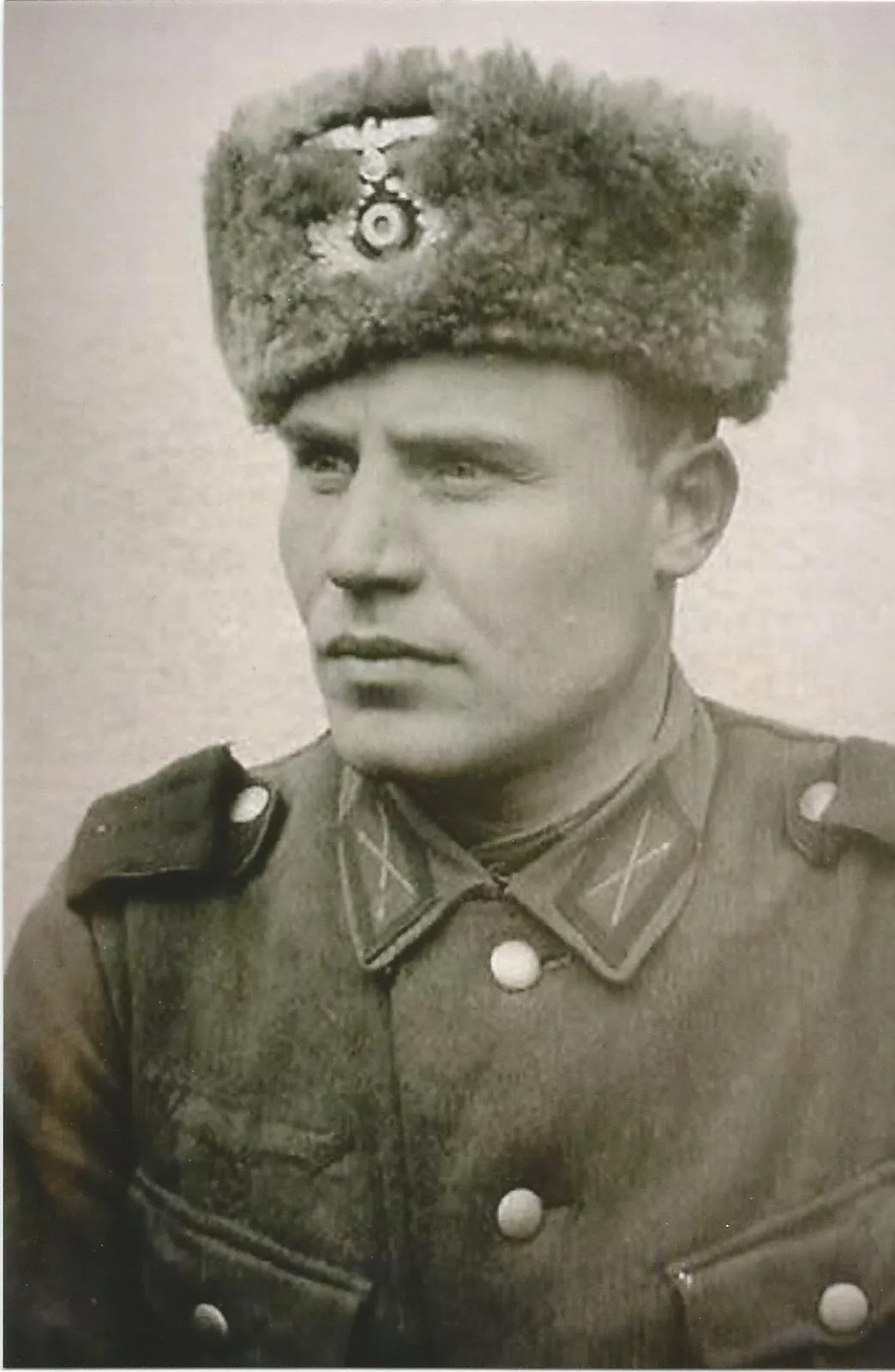
$6,375.00
Quantity Available: 1
Item Code: 1284-02
Shipping: Determined by Method & Location of buyer
To Order:
Call 717-334-0347,
Fax 717-334-5016, or E-mail
Let it be known we do not support or condone Adolf Hitler or the Nazi party in any way, shape, or form. That said let me continue with the description of this very rare piece of military headdress captured by a member of the US 101st Airborne in France in 1944.
There are two different eastern European hats called papakhas. One, called a papaha, is a high fur hat, usually made of sheepskin. The hat has the general appearance of a cylinder with one open end and is set upon the head in such a way as to have the brim touch the temples. Some examples have earflaps which can be folded up when not in use. The other style is called a kubanka, and is similar to the papaha, made of sheep fur but shorter and without earflaps. Offered here is the latter. This ultra-rare example was of a type worn by Ukrainian and Russian Cossacks that took the side of the invading Germans in World War 2.
"A substantial number of Cossacks served with the Germans.... While some Cossacks in German service were former White Army refugees or related to them, many Soviet citizens, including rank-and-file Cossacks, defected from the Red Army to join the “Cossack units” of German armed forces. As early as 1941, the German leadership formed the first Cossack detachments from prisoners of war, defectors and volunteers. The Dubrovski Battalion formed of Don Cossacks in December 1941 was reorganized on July 30, 1942, into the Pavlov Regiment, numbering up to 350 men. The Germans used Cossacks for anti-partisan activity in the rear of the German army. The Cossack National Movement of Liberation hoped to gain an independent Cossack state, to be called Cossackia, after the war. In 1943, after the 1st Cossack Division was formed under the command of General Helmuth von Pannwitz....Following its formation, the 1st Cossack Division comprised seven regiments (two regiments of Don Cossacks, two regiments of Kuban Cossacks, one regiment of Terek Cossacks, one regiment of Siberian Cossacks and one mixed reserve regiment) .... In September 1943, the division was transported to FRANCE to assist in the guarding of the Atlantic Wall. The 2nd Cossack Division, under the command of Colonel Hans-Joachim von Schultz, formed in 1944, existed for a year. Both Cossack divisions were made part of the XV Cossack Cavalry Corps, totaling some 25,000 men. They wore regular Wehrmacht uniforms and not Waffen-SS ones, as has occasionally been incorrectly alleged. Although in 1944 General von Pannwitz accepted affiliation with the Waffen-SS.... He gained control over COSSACK UNITS IN FRANCE....
The Corps contained regiments of different Cossack groups, who were Don, Kuban, Terek and Siberian Cossacks who had been fighting Tito’s guerrillas, the Ustashi and Domobranci in the former Yugoslavia. At the end of the war in 1945, they conducted a fighting retreat north-eastward over the Karavanken Mountains into Carinthia, where they surrendered to the British Army in Allied-administered Austria. They hoped to join the British to fight Communism. At the time the Cossacks were seen as Nazi collaborators, and they were reported to have committed atrocities against resistance fighters in Eastern Europe. As part of Operation Keelhaul, the British returned Cossack prisoners of war to Russia. On 28 May 1945, told they would be resettled in Canada or Australia, the Cossacks were transferred to SMERSH custody at the Soviet demarcation line at Judenburg.... Many of those were reported as never having been Soviet citizens. An unknown number were subsequently executed or imprisoned. This episode is widely known as the Betrayal of the Cossacks." (Thank you W.A.R. HISTORY. ORG). For further in-depth inform please follow this link: https://archive.org/details/NewlandCossacksInTheGermanArmy/page/n169/mode/2up.
The Kubankas is made of black sheep skin wool/fleece over a core of what appears to be polished cotton. The fleece is 90% intact with losses from wear here and there. It is 4 inches in height and has a diameter of 29 inches. It is fully lined internally with a quilted greenish cotton. The domed crown is made of a maroon-colored velvet with 4 yellow decorative strips 1/4-inch wide each that form a cross pattern. Fading if any is minimal. On the front of this crushable "busby" is a white metal German Wehrmacht eagle over swastika device which is firmly affixed. It has about 90% frosting remaining. Below this is the ubiquitous white metal Wehrmacht badge of oak leaves surrounding a round cockade. This measures 3 inches by 1 3/4 inches. This latter badge was a requirement that was displayed by the Cossacks particularly those ordered to the Western Front; their affiliation to the German military would be visually unmistakable.
This Kubankas was captured by a member of the US 101st Airborne during the D-Day campaign beginning June 6th, 1944 (101st Airborne WWII Division Chronicle). For details on the actions where the 101st met Nazi Cossacks I direct you to the first-class writings of Mark Bando. (Books | List of books by author Mark Bando). The Nazi Cossacks were stationed in varying strengths all over the invasion area and its rear. It was in a fire fight that this hat was taken. This very real veteran bring-back has been in 2 world class collector's hands since the captor brought it home. More details can be provided to the buyer. Others of the type have been sold in the past and none that this compiler has seen offered for sale and sadly in collections have been the real thing, but all fakes. This one is 100% real and correct in every way. The guarantee on this historic item is "lifetime". The rarest of the rare! [pe] [ph:L]
~~~~~~~~~~~~~~~~~~~~~~~~~~~~~~~~~~~
THIS ITEM, AS WITH ALL OTHER ITEMS AVAILABLE ON OUR WEB SITE,
MAY BE PURCHASED THROUGH OUR LAYAWAY PROGRAM.
CLICK HERE FOR OUR POLICIES AND TERMS.
THANK YOU!
Inquire About ONE OF THE VERY FEW GENUINE WORLD WAR 2 NAZI COSSACK KUBANKAS
Most Popular
Historical Firearms Stolen From The National Civil War Museum In Harrisburg, Pa »
Theft From Gravesite Of Gen. John Reynolds »
Selection Of Unframed Prints By Don Troiani »
Fine Condition Brass Infantry Bugle Insignia »
featured item
CONFEDERATE SOLDIER LETTER—MAJOR SAMUEL S.J. MOORE, STONEWALL BRIGADE / WIA AT KERNSTOWN--SECOND MANASSAS--THE WILDERNESS
Dated “Camp near Centerville November 1 1861.” Addressed to wife Ellen Scollay Moore. 3 pp. In ink on unlined paper, 12.75 x 7.75.” Exhibits fold marks & slight smudging while remaining entirely legible. In protective sleeve. Born June… (846-566). Learn More »


